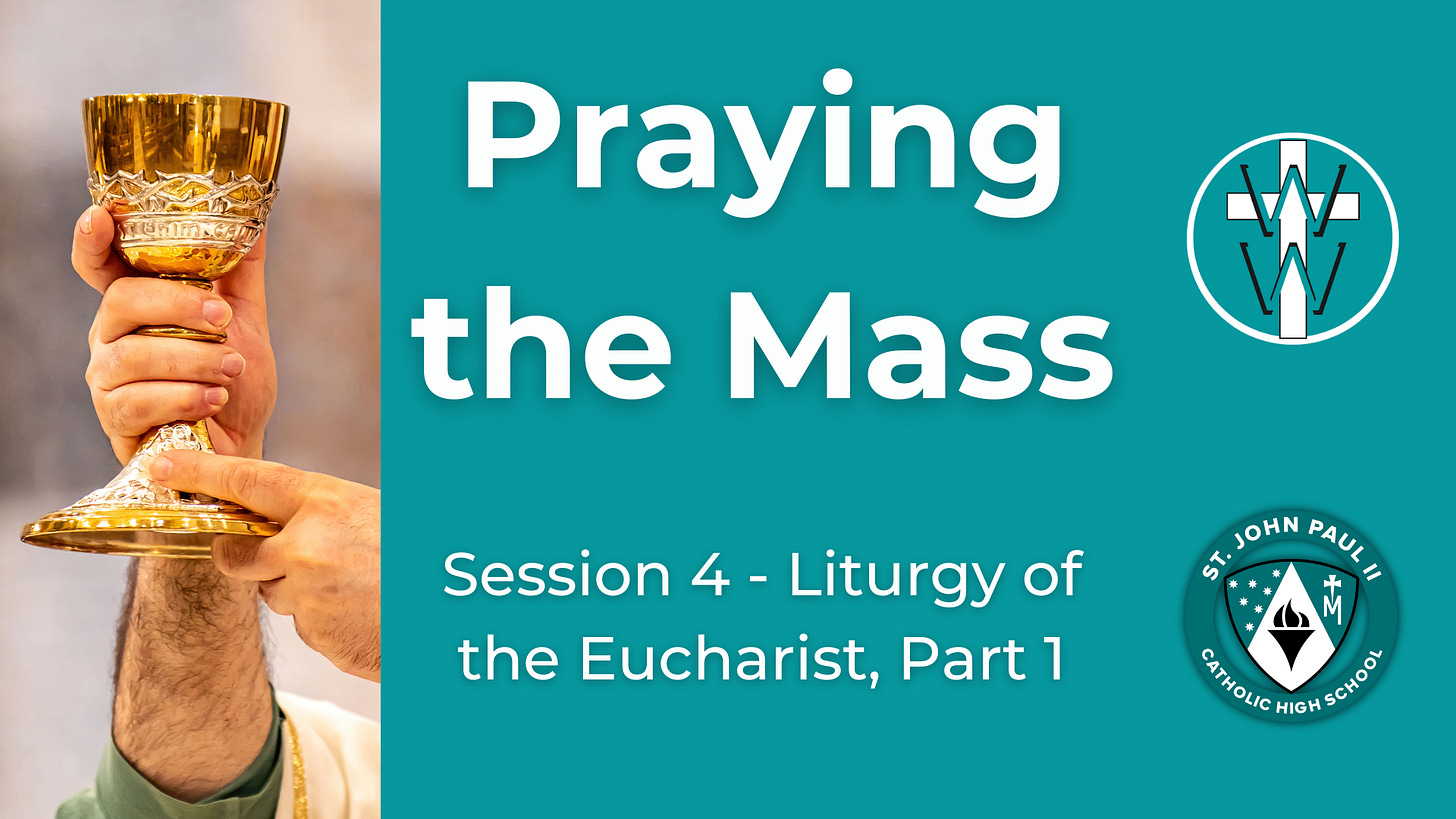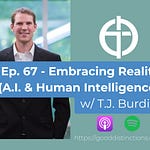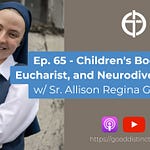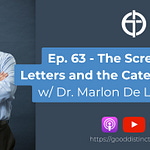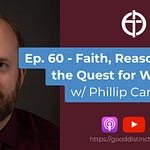Introduction
Welcome back to session 4 of “Praying the Mass.” I am thrilled to share with you today the Liturgy of the Eucharist. With the Prayers of the Faithful completed, the Offertory begins.
Presentation of the Gifts
Gifts
Bread and wine are brought to the altar and prayers of offering and blessing are made. This presentation of the gifts, the bread and wine, and the preparation of the altar is getting us ready to enter into the most sacred part of the Holy Mass.
The bread and wine, now present on the altar, are gifts because all created things come from God. Without the act of creation and the sustaining of being itself, we would not have bread and wine to offer in the first place.
Even from the earliest days, humanity has offered the first fruits of their harvest or flock back to God in thanksgiving. Recognizing an abundant harvest or a healthy flock or even a child being born as a gift from the divine is not isolated to Christianity and Judaism. In the oldest pagan religions, armed only with God-given human reason, there is an understanding that there is a higher power which created and sustains all things. And, so, the bread and wine are gifts.
But that is not all. Our own lives are gifts. The churches in which we worship are gifts. The vestments, sacred vessels, and artwork are gifts. Without God, there is nothing. Everything we have is a gift in a very real sense. As St. Therese of Lisieux said, “Everything is grace.”
Offerings
The bread and wine are offerings because they are being set aside for sacred use. Ordinary bread and wine are placed upon the altar with the full expectation of the miracle that is to come. These gifts are being offered for a specific purpose. Namely, to make Christ present Body, Blood, Soul, and Divinity, under the veil of a sacrament. The bread and wine are not the only things being offered. We offer God, each day, our works, joys, sufferings, in union with the action of Jesus at the altar at Holy Mass.
As St. Paul says in Romans 12:
“I appeal to you therefore, brothers, by the mercies of God, to present your bodies as a living sacrifice, holy and acceptable to God, which is your spiritual worship (Rom. 12:1).”
Everything we do throughout our day, which is intentionally united to Christ, is our spiritual offering. In offering ourselves, we are transformed to be more like Christ, just as the bread and wine become Christ. We can also offer all of the many requests and intentions that we have. We offer all we are next to the bread on the paten and in the chalice with the wine.
Finally, the bread and wine are holy and unblemished sacrifices. When the bread and wine are set aside for sacred use, they can no longer be used as ordinary food. In a simple sense, this is a sacrifice.
When we understand that we are uniting ourselves to this offering at Mass, we come to realize that the content of our day to day lives is the sacrifice that we are offering. These sacrifices are acts of love: cleaning the dishes so your spouse does not have to do it, practicing virtue rather than vice, setting aside time for prayer, or striving to live the commands of Jesus Christ each moment of the day.
Then, at Holy Mass, we offer these actions, as well as our failings, alongside the bread and wine. We become a sacrifice offered to God in humility. Holy because we are set apart by God in our Baptism. Unblemished because we are set right with God by our Baptism, frequent reception of the Sacrament of Penance, and by being transformed by our receiving of Holy Communion in a state of grace.
Prayer Over the Offerings
During Sunday Mass, the collection is taken during the Prayers Over the Offerings. This is a chance for the assembly to make their tithing a liturgical action. Just as the gifts of bread and wine are offered, so too are our “first fruits.”
During this preparation, you might see the Deacon or Priest pour wine into the chalice at the altar and then a bit of water as well. They are also quietly saying,
“By the mystery of this water and wine, may we come to share in the divinity of Christ, who humbled himself to share in our humanity.”
Water, in most places of the world, is a fairly common thing. This is symbolic of humanity. Yet, wine is expensive and takes a long time to make; this is symbolic of divinity. And when the wine and water are mixed, can they be separated again? No! So, it is with the Incarnation of Jesus Christ. The Byzantine tradition takes the symbolism a step further. During Divine Liturgy, warm water is added to the wine during the preparatory prayers because the blood of a living Man is warm!
Turning to the people after the Offertory Prayers, the priest says,
“Pray, brethren, that my sacrifice and yours may be acceptable to God, the almighty Father.”
This is not a prayer. This is an invitation. This is a command. The people then respond, speaking to the priest saying,
“May the Lord accept the sacrifice at your hands for the praise and glory of his name, for our good and the good of all his holy Church.”
This beautiful exchange is a call to action. The priest is about to enter into the Holy of Holies to offer the one Sacrifice of Jesus Christ in the Person of Christ, Head of His Body. The people offer sacrifice as well, but in a different way as members of the Body of Christ.
Also, the people are acknowledging that the Sacrifice being offered is 1) primarily at the hands of the priest, 2) is for the praise and glory of God, and 3) is for the “making holy” (sanctification) of the people.
It should be noted that after the priest says the Orate, Fratres and he is offering the Mass in the ad orientem posture, the Roman Missal does not direct him to turn back towards the people until the Ecce Agnus Dei (“Behold the Lamb of God…”). He is in the fight. His attention, and ours, should then be entirely fixed upon entering into the Sacred Action of the one Sacrifice of Jesus Christ, presented once more, outside of space and time.
Attention entirely fixed upon the task at hand, the priest begins the Eucharistic Prayer by saying, “The Lord be with you.” (Latin: Dominus vobiscum) The people respond, “And with your spirit.” (Latin: Et cum spiritu tuo) This small exchange is not a greeting. The priest is acknowledging that, in our Baptism, we are members of the Body of Christ. And as members of the Body of Christ, we offer ourselves in union with the Sacrifice of Jesus Christ.
We say, “And with your spirit” because we are acknowledging that by the power of the Holy Spirit, in his ordination, the priest is acting in the Person of Christ the Head of His Body. We are not speaking of “your spirit” as the priest’s human spirit. We are acknowledging his priestly spirit, in Christ, in the power of the Holy Spirit.
Next the priest says, “Lift up your hearts.” (Latin: Sursum corda) The people respond, “We lift them up to the Lord.” (Latin: Habemus ad Dominum) Literally in Latin, this response means something like, “We hold towards the Lord.” This means we are lifting our hearts now or we have already been lifting them up and will continue to do so. God, ever-patient, is giving us another chance to clue in to the miracle in front of us before we charge into the breach in the battle of prayer.
Then the priest says, “Let us give thanks to the Lord our God.” (Latin: Gratias agamus Domino Deo nostro) And the people acclaim, “It is right and just.” (Latin: Dignum et iustum est) It is “right” for us to give thanks to God because that is why human beings were ultimately created. We are made to worship God. It is “just” because God alone deserves glory and praise.
This ancient dialogue of the Preface Dialogue begins the Eucharistic Prayer. It reminds us of who we are as priest and people, Head and Members of the Body of Christ. It reminds us of our active internal role in entering into the Sacrifice of the Mass. It reminds us of the glory due to God and our role in offering Him praise.
The Preface
The first essential part of the Eucharistic Prayer is the Preface for the day which is then offered by the priest. These prefaces change depending on the season of the Church liturgical year and the feast, solemnity, or memorial that is being celebrated.
Directly following the Preface and just before the beginning of the Eucharistic Prayer comes the Sanctus (Holy, Holy, Holy). This ancient prayer was added to the Sacred Liturgy in the first half of the fifth century and is drawn from Isaiah 6:3 and Matthew 21:9. The Preface and the Sanctus specifically call to mind the angels and remind us that we are praising God, with all of the angels and saints in Heaven present with us. Heaven is touching Earth and we are present for this spectacular event.
In the 1962 Roman Missal, there is a beautiful insight in the rubrics. At the word Sanctus, the priest joins his hands and bows in humble adoration of God. Then, at the words Benedictus qui venit in nomine Domini (Blessed is he who comes in the name of the Lord), he stands fully and makes the Sign of the Cross. In the midst of the angels and the saints, the grace of God is pouring out upon us and blessing us as we enter into the great Action of Jesus Christ in the remainder of the Eucharistic Prayer.
This is no longer called for in the rubrics of the 1970 Missal, but the spirit of the theological significance is no less for us!
The Sanctus is one of the oldest congregational hymns in existence. In Greek it is the ton epinikion hymnon or “Hymn of Victory.” This the final part of the Eucharistic Preface and is said or sung at every single Mass in the Latin Rite. The hymn also exists in some form in all but one of the Eastern Rites of the Catholic Church.
Historically, in the Latin Church, the bells were rung at the start of the Sanctus to signal that the Roman Canon was coming imminently. Let us now walk through the Sanctus piece by piece.
“Holy, Holy, Holy, Lord God of hosts.” (Latin: Sanctus, Sanctus, Sanctus, Dominus Deus Sabaoth.) There are two main points of interest I would like to draw out here: the repetition of Holy and the word “hosts.”
In English, and many other languages, there are words called comparatives and superlatives. For example, we have the word “good,” the comparative “better,” and the superlative “best.” In Hebrew, this construction does not exist. To say “better,” you would say “good, good.” And to say “best,” you would say, “good, good, good.” Therefore, to say Holy, Holy, Holy is saying that God is the Most Holy.
It is also a call to worship, often done in threes. Think, for example, of the popular Christmas chant where “O come, let us adore Him (Venite adoremus)” is repeated three times. And, of course, the repetition of three refers also to the Trinity. Like most things in the Church, there are multiple levels of meaning.
The word “hosts” refers to the heavenly hosts of angels, which St. Luke refers to in his account of the birth of Jesus. These legions of angels do the will of God and bring Him glory. They are with us in the fight and they join us in worship of Him.
As Dr. Scott Hahn wrote so eloquently,
“When we go to Mass, the congregation is never small, even if it is nonexistent in terms of human attendance. The angels are there, as is evident even in the words of the Mass: ‘And so with all the choirs of angels we sing: Holy, holy, holy…’ The Mass itself cries out for us to be aware of our angels (Hahn, Signs of Life).”
“Heaven and earth are full of your glory.” (Latin: Pleni sunt cæli et terra gloria tua) Of course, here we are giving God praise, acclaiming the truth that for those with the eyes of Faith, He is recognizable all around. All things are directed ultimately to Him.
“Hosanna in the highest. Blessed is He who comes in the name of the Lord. Hosanna in the highest.” (Latin: Hosanna in excelsis. Benedictus qui venit in nomine Domini. Hosanna in excelsis.) This refers to the cry of the people as Christ entered Jerusalem to the sight of palm branches being waved, reminiscent of Solomon’s entrance into Jerusalem. The people exclaimed of Christ,
“And the crowds that went before him and that followed him were shouting, ‘Hosanna to the Son of David! Blessed is he who comes in the name of the Lord! Hosanna in the highest!’ (Mt. 21:9)”
Hosanna means “Praise to the Lord!” And so, we are offering praise to the Father for the gift of the Son. In this hymn, the coming of Christ in the Nativity is called to mind. We know that Christ will come again. The Sanctus reminds us that Christ comes to us now. At the Mass, the Body, Blood, Soul, and Divinity of Jesus become present under the veil of a sacrament on the altar.
The Sanctus, with its mention of the angels and the triumph of Christ, is like a bridge between Heaven and earth. The Lord of Heaven and earth is drawing us deep into His heart. The eternal self-offering of the Son to the Father in the Spirit is veiled before us by signs and symbols. But there is no doubt that the Holy Sacrifice of the Mass, especially in the Eucharistic Prayer is a foretaste of Heaven.
Epiclesis and Institution Narrative
There are currently a few different options for the Eucharistic Prayer, proper. However, they all contain two more essential parts: the Epiclesis (Greek: Epiklesis, Latin: Invocatio) and the Institution Narrative.
The Epiclesis is the calling down of the Holy Spirit upon the gifts of bread and wine that they may become the Body, Blood, Soul, and Divinity of Jesus Christ. Every Western and Eastern liturgy contains this essential prayer. The Institution Narrative is the full narrative of the Last Supper in which Christ instituted the Eucharist as the New Covenant, including the words of consecration (This is My Body… This is My Blood…).
In the Catholic Church, there has always been an understanding that this invocation of the Holy Spirit was essential, along with the words of consecration.
We may be tempted to ask exactly when does the bread and wine actually become Jesus’ Body and Blood? Is it at the Epiclesis or is it at the Institution Narrative? This has been a source of tension through the history of discussions between the East and the West in the Church. The important thing is to recognize the essential nature of both.
Without the words of consecration, there is no Eucharist. But without the power of the Holy Spirit, there is no Eucharist. This is absolutely not to say that the Holy Spirit waits for the priest to call on Him. The entire Holy Mass is the prayer and working of Almighty God: Father, Son, and Holy Spirit. But God has designed that His creatures should cooperate with His sacred Action. Therefore, the invocation of the Holy Spirit and the words of consecration of the Son are both to the glory of the Father and the making holy of the people, which hopefully we will remember are the two main ends of the Holy Sacrifice of the Mass.
We take our cue of the importance of both elements, the Institution Narrative and the Epiclesis, from the posture of the people at the Holy Mass. Following the Preface and the Sanctus, the people kneel. In the Roman Rite, the posture of kneeling is twofold: humility and adoration. We kneel in humble adoration because God is sending His Holy Spirit in power to consecrate the bread and wine to become the Most Holy Eucharist, at the hands of the priest. We are humble because we understand who God is and who we are in relationship to Him. We adore Him because it is right and just, especially given the miracle that is taking place in front of us.
During the Epiclesis, the priest’s posture changes as well. He extends his hands, palms facing down, over the gifts to show the calling down of the Holy Spirit. The bells are also rung at this time to draw our sense’s attention to what is happening.
During the Institution Narrative, the priest is engaged in the Sacred Action of Jesus Christ. When speaking the words of consecration, he bows and speaks in a straight tone. This is to show that the words are not his own, rather Jesus Christ is speaking through him at that moment. Back in ancient times, a messenger would visit a foreign king and speak the words of his own master. The foreign king would know that the words did not belong to the messenger because the messenger would speak them while bent at the waist.
Then, the priest genuflects before the King of kings now present on the altar. Here, in the climax of the Mass, the bells are rung three times as if to say Holy, Holy, Holy. As I mentioned earlier, in Hebrew, there are no grammatical comparatives and superlatives. To say holier, you would say “holy, holy,” and to say holiest, you say “holy, holy, holy.”
Anamnesis
The fourth essential part of the Eucharistic Prayer is Anamnesis.
During the Institution Narrative, the bread and wine are consecrated separately, first the bread then the wine, and they become the Body and Blood of Jesus. The result of separating blood from a body is death. In this way, the Institution Narrative makes present the Passion and Death of Jesus. Is this just a metaphor? Is it symbolic? Far from being merely a symbol, this means the Holy Cross is made present to us in the here and now, outside of time, by the power of God. Rather, we could say that we are transported to the foot of the Holy Cross where the Son of God shed His blood and life for our sake. When we begin to see with the eyes of faith that this is a reality and not simply symbolic, we begin to understand anamnesis.
Anamnesis in Greek literally means bring to mind. We could also translate it as a deliberate recollection. Anamnesis in the context of liturgy is more than just a memory or a calling to the mind in some abstract way. Through the power of the Holy Spirit and the mediation of Jesus Christ, our High Priest, the One Sacrifice becomes present once again in an unbloody manner. The word anamnesis is what Jesus says in the words of consecration when He says, “Do this in remembrance of me.”
The Anamnesis makes present the Sacred Action of Jesus Christ to our senses through external signs and symbols. It is a reminder on the surface level. But if we push past the veil, God allows us to see and to receive the full power of His saving Mysteries which were so powerful that they cannot be contained in a single moment of history. The Cross was two thousand years ago, but it comes present once again at every single Mass. What we see as signs and symbols are made truly present to us, in reality.
Of course, after the Eucharistic Prayer, the priest puts a piece of the Sacred Host into the Sacred Chalice in the Fraction Rite. In this action, anamnesis makes the reunion of the Body and Blood of Christ, the Resurrection, present to us once more. He who died will not die again. The whole Christ is risen. This is why the faithful receive the full risen Christ in His Body, Blood, Soul, and Divinity in every particle of the Host or every drop from the Chalice.
Intercessions
The fifth main part of the Eucharistic Prayer is the Intercessions. Intercession means to intervene on behalf of another. From the outset, it should be clear that the Eucharistic Prayer must essentially be intercessory because it makes present the Saving Mysteries of Jesus Christ who suffered, died, and rose to redeem all mankind.
St. Paul says to St. Timothy: “For there is one God, and there is one mediator between God and men, the man Christ Jesus… (1 Timothy 2:5).” Jesus Christ is our mediator. He is the Pontifex Maximus (the “Greatest Bridge-Maker“). He stands in the gap between mankind and the Father, a gap which was caused by Adam’s first sin and perpetuated by each personal sin of every sinner. He is the only Way to the Father. He is the Bridge. And so, in the Eucharistic Prayer, we see this reality take form especially with the Intercessions.
The Sacred Liturgy is a priestly action. It is the prayer of our High Priest, Jesus Christ, active in a special way through the instruments of the ordained minister and the baptized faithful as Head and Members. The Sacred Liturgy is the work of God for His glory and for the sanctification (making holy) of His people and the whole world.
As the Eucharistic Prayer begins, the priest asks in the confidence of Jesus Christ for what we need, in and through Jesus Christ. The priest asks for the gifts of bread and wine, and the personal intentions and sacrifices of those gathered, to be accepted and blessed by God.
In this way, our own personal sacrifices and intentions are being offered to the Father, in the Son, and through the Holy Spirit. Jesus Christ, the Son of God, is interceding for us to the Father. He intercedes for the whole world, beginning with the Church. We ask that God may give the Church peace, guidance, union, and governance throughout the world. Then we offer intercessory prayer for the Pope and for our local bishop.
In the first Eucharisitic Prayer, there are prayers of intercession for “all those who, holding to the truth, hand on the catholic and apostolic faith.” This means, firstly, the whole college of bishops who are the successors of the Apostles. But, it also means all those throughout the entire Church. The Church exists in order to evangelize. She exists in order to bring glory to God and full, abundant life to all men and women. This happens by fidelity to the catholic and apostolic faith which must be handed on without change or lessening.
We should not forget the saints, as well!
Since it has been established by the Church that we have recourse to the saints, to the glory of God, then we ought to exercise it. We have previously discussed the one perfect Sacrifice of Jesus Christ. On the Cross, Jesus Christ earned superabundant merit. His perfect, eternal Sacrifice was sufficient to redeem all of mankind. But God has given us the ability to unite our own actions with His perfect Action.
The merits of those who have come before us, the saints, are united to the Cross of Jesus Christ. Their cooperation with God’s grace is what allowed them to accept the invitation to eternal life. No human action is done in isolation. Our actions have consequences, and they affect other people. Therefore, our good actions, our good works, create a ripple effect that positively affects the souls of others. When applied to the Cross of Jesus Christ, these good works share in the superabundant merit of Jesus Christ. This is the essence of what Catholics mean when they say, “offer it up.”
It is not only the past merits and prayers of saints that have efficacious power in God’s grace. The saints, alive in Heaven, pray for the good of those still below on Earth. The Church investigates alleged miracles, wrought by God’s grace through the intercession of a specific person. If the miracle is found to be legitimate, then it confirms that the person is in Heaven. This is part of the official canonization process of the Church.
By the merits and prayers of the saints, we are defended from temptation and evil. The genius of the saints is found in their fidelity to and love of God. The example of their lives and the fervor of their preaching is a testament to God’s goodness and an acclamation of His glory. Even in the midst of suffering, we can claim the joy of Jesus Christ.
Even if we feel utterly alone, we know that we are never alone. As the author of Hebrews writes:
“Therefore, since we are surrounded by so great a cloud of witnesses, let us also lay aside every weight, and sin which clings so closely, and let us run with endurance the race that is set before us, looking to Jesus, the founder and perfecter of our faith, who for the joy that was set before him endured the cross, despising the shame, and is seated at the right hand of the throne of God (Heb. 12:1).”
The Words of Consecration
Let us finish today by looking at the gems of the Holy Mass: the words of consecration. The Holy Sacrifice of the Mass is one prayer of our High Priest Jesus Christ from beginning to end. But even in that one prayer, the Words of Consecration are precious jewels. These holy words, spoken after Jesus has taken ordinary bread in His holy and venerable hands, make His own Body present in a mystical way.
Mystical, however, does not mean “less real.” The physical is brought up into the spiritual and transcendent in a way that is hidden to our senses but very much real. We have to remember the power of the speech of God. When God speaks, things come into being. Think back to Genesis: God said “Let there be light” and there was light.
So, when the God-man Jesus Christ says, “This is my Body,” He means it. The bread is no more. The characteristics remain, but the substance underneath the appearances has transformed or shifted. This is the miracle of transubstantiation. Ordinary bread and wine become the Body, Blood, Soul, and Divinity of Jesus Christ.
The miracle of the Eucharist is a mystery. Though, we should be careful to take Jesus at His Word and to understand that God who made all things visible and invisible can make this reality present to us. When the priest elevates the Host, after the Words of Consecration, we are adoring our Eucharistic Lord, fully present under the veil of the Sacrament.
The Eucharist is the Sacrament of Sacraments. Baptism orients us towards Holy Communion, as does Confirmation. Penance restores us to union with God, to partake worthily of the Blessed Sacrament. Holy Orders and Matrimony are at the service of Communion. Finally, the Anointing of the Sick is healing for soul and body and can be followed by reception of Holy Communion. Each of these outward showings of God’s inner-life, His grace, draw from the source of the Eucharist and are oriented to the summit which is the Eucharist.
The Holy Body of Jesus Christ was “pierced for our transgressions; he was crushed for our iniquities; upon him was the chastisement that brought us peace, and with his wounds we are healed (Is 53:5).” His Body was given up for you and for me. He went to the Cross for you and for me. But that was not enough for the gratuitous and superabundant love of God. He also established for us the everlasting memorial of His suffering and death by which the Holy Eucharist is made present for us to receive.
The Byzantine traditions contain a remarkably beautiful prayer before Holy Communion which is said every single day at Divine Liturgy. This is a prayer of the heart, packed with meaning, gratitude, and seeking healing for soul and body. We will end today with this prayer and then pick up with the words of consecration over the chalice next week!
“O Lord, I believe and profess that You are truly Christ, the Son of the living God, Who came into the world to save sinners, of whom I am the first. Accept me as a partaker of Your mystical supper, O Son of God, for I will not reveal Your mystery to Your enemies, nor will I give you a kiss as did Judas, but like the thief I confess to You: Remember me, O Lord, when You shall come into Your kingdom. Remember me, O Master, when You shall come into Your kingdom. Remember me, O Holy One, when You shall come into Your kingdom. May the partaking of Your Holy mysteries, O Lord, be not for my judgment or condemnation, but for the healing of my soul and body.
O Lord, I also believe and profess that this, which I am about to receive, is truly Your most precious body and Your life-giving blood, which, I pray, make me worthy to receive for the remission of all my sins and for life everlasting. Amen. O God, be merciful to me a sinner. O God, cleanse me of my sins and have mercy on me. O Lord, forgive me for I have sinned without number.”



